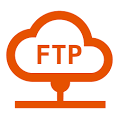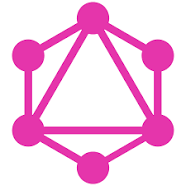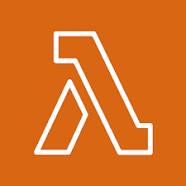
Pankaj Patidar
I have 7.8 year experience.[5.4 Year Node Js], MongoDB, MySQL, PostgreSQL, Aws lambda ,Api GW,GraphqlSNS,Eventbridge,Angular7+,Payment Gateways, Express.js,fastify
- Role
Senior Digital Engineer (Node Js Developer)
- Years of Experience
9 years
Skillsets
- Postman
- Express
- Google API
- GraphQL
- HTML
- Jira
- Koa
- MongoDB
- Mongoose
- PayPal
- PostgreSQL
- EventBridge
- Prisma
- Razorpay
- Sendgrid
- Sequelize
- SNS
- SQS
- stripe
- Swagger
- Twilio
- Vtex cms
- Angular Js
- Node Js - 5.4 Years
- JavaScript - 5.4 Years
- Git - 7 Years
- MySQL - 4 Years
- GitLab - 3 Years
- Fastify - 1 Years
- jQuery
- DynamoDB
- Core php
- Node Js
- JavaScript
- AJAX
- API Gateway
- API services
- AWS Lambda
- Bitbucket
- Bookshelf
- CloudWatch
- Code igniter
- CSS
- eCommerce platforms
Vetted For
- Roles & Skills
- Results
- Details
- Software Developer II - Express JS and Node JS (Onsite, Bangalore)AI Screening
- 50%
- Skills assessed :CI/CD, DevOps, AWS, Docker, Express Js, MySQL, Node Js, Postgre SQL, Redis, Strong Attention to Detail
- Score: 45/90
Professional Summary
- Apr, 2023 - Present2 yr 5 months
Senior Digital Engineer (Node Js Developer)
Sonata Software Ltd. - Mar, 2021 - Apr, 20232 yr 1 month
Senior Software Developer (Node Js Developer)
Bitcot Technologies Pvt. Ltd. - Jul, 2016 - Mar, 20214 yr 8 months
PHP Developer And Node Js Developer
Desiredsoft Internet and Software Solution Pvt. Ltd. - Jan, 2014 - Dec, 20162 yr 11 months
Teaching of B.Sc(CS)
Govt. BSPG College Jaora
Applications & Tools Known

PHP
XAMPP

cPanel

FTP server

MySQL

jQuery

Git

Javascript

Ajax

Angular
Node.js

MongoDB

Mongoose

Express.js
.png)
Fastly

Sequelize ORM

PostgreSQL

GitLab

AWS (Amazon Web Services)

RazorPay

PayPal

Node Js

Express

Fastify

Koa

DynamoDB

GraphQL

Sequelize

Prisma

HTML

CSS

Angular JS

Web Services

API

Postman

Stripe

Google API

Bitbucket

swagger

SendGrid

Twilio

Rollbar

AWS Lambda

API Gateway

SNS

SQS

Event Bridge

IAM

CloudWatch

CMS
Work History
Senior Digital Engineer (Node Js Developer)
Sonata Software Ltd.Senior Software Developer (Node Js Developer)
Bitcot Technologies Pvt. Ltd.PHP Developer And Node Js Developer
Desiredsoft Internet and Software Solution Pvt. Ltd.Teaching of B.Sc(CS)
Govt. BSPG College JaoraAchievements
- Publish the Research paper on Wireless home security in NET-ITM-II conference in 2013
- PHP industrial training for months at INCREDIBLE INFOSOFT Pvt. Ltd. Indore
- Star performer Employee award for 2022
Major Projects
Ptsdhub Information
Connectio
Ekmatra (E-commerce)
Pantaloons (E-commerce)
Education
M.Sc (CS)
Christian Eminent College, Indore (2014)BCA
Christian Eminent College, Indore (2011)H.S.C.
Patidar Hr. Sec. School, Dhar (M.P.) (2007)S.S.C.
Patidar Hr. Sec. School, Dhar (M.P.) (2005)
Interests
AI-interview Questions & Answers
My name is Pankaj Panditha and I have 7 years of experience in development, 5.4 years in GIS. I have worked with the old 3D framework like Express and Fastify and a little bit about Core. I have 1 year experience in Angular version 8. I work with database like MySQL, MongoDB, PostgreSQL and I work also with AWS services. So, one of the Node project we are using AWS Lambda and EventBridge for triggering Cron jobs from the Node script. For demo purpose, I have created one POC with API gateways implementation with different methods and I am using DynamoDB also for small user crud. So, that thing I have and I work with, majorly I work with the e-commerce project and admin APIs for API for admin and we are using, we have like the creating API for Node.js with Express and Fastify also.
Directing with the database. Okay. So in MySQL and Postgres, if we are, uh, doing some cluster indexing means, like, if you are not doing any indexing, then the database is going slow. If you are doing indexing, then that means, like, the database is performance is very high. And with the help of Node JS, we can access, like, the and positive database. So, uh, so for making any API, you know, uh, we can easily interact the database with the normal applications.
Okay. So, uh, here we are, uh, we are using And what expect we are getting this kind of error? So from that one, we are using express. In express, we are using the okay. Uh, okay. So here, we are creating a 1 middleware, and then we can check, like, whatever the memory we are using for the application.
So, uh, if you have to import the database in back end, then, uh, with the express framework, uh, we are using JWT authentication method. And we are restoring the JWT token for the particular user in DB, and then we are checking with the middleware. With the help of middleware, we can check, uh, that particular request is coming from particular user or not. So that, uh, we can handle, uh, by the token, uh, that authentication part in express application. So we are checking, like, that particular user is, uh, logged in with different different devices, then we can check the device ID and, uh, the token, whatever the token we have entered for the while the user is logged in, we have created token. The same token we expect from the f, uh, f level, like, any, uh, front end application.
Okay. So, uh, suppose yeah. So, uh, uh, with the Postgres, if we are using a migrations file with the simpleize ORM tool or Postgres or PG tool, uh, ORM tool we can use, like the next and Like this, uh, ORM tool if we are using the they have they have already provide, like, the migration. So we are creating migration for that particular schema. So as per the migration, uh, the schema is created on the database. So, uh, we can create, like, the migration file, and we can, uh, run this migration file first, and then we can create a data on, uh, development purpose. Then we can create the schema of the tables, uh, in PostgreSQL database and MySQL database. So and not just application when we run, uh, migration. So we can run, like, the migration, uh, We, uh, configure this migration command in our, uh, start descriptor of the Node JS project, then we can easily, uh, handle all the migration file analysis.
What technique do you use to perform real time data update in a Modis application that uses on MySQL database. Okay. Okay. So, uh, in the MySQL database, if we want to use not just application, Then for the data updation, we are using update query or we write some if you want to like the log query, then we can write a log query. If you want to use any ORM tool, then we can use, uh, a pre build, uh, ORM tools query for updation. To data in, uh, database directly, we can do. Suppose we have, uh, yeah. Or in Node JS application, there is one package socket.if. So, uh, for that one, uh, we can triggering, uh, all the events, uh, for the updating the data. So, uh, we can trigger all the database triggers once we needed, like, the data operation. So we can easily do that, uh, kind of, uh, things. Uh, we can do that trigger. With the help of trigger, we can do easily, or we can set a.
The Docker file would be mean to set up an auto application. Can you identify an optimization that could Yeah. So here, uh, we can configure, uh, in in the place of your twice copy. You can remove one copy and we can configure as a like this. I'm thinking we are ready to hear. Because it's just not an app like this.
Yeah. So, uh, in express, uh, with the express relation, if we are using Postgres and MySQL database, so both database support transactions. So with the help of transaction, we can achieve the asset property in our, uh, application script. So suppose we are writing some express application, we are creating some migration. And inside the migration, we can write some code for transition, like, ways. Or if we want to, we can write support some code in transaction code in our application, uh, controller also. So once we run the application controller, the transaction is running and then install the commit and rollback, we need to easily handle all the things. Suppose if we want to use the order processing. So while the order process, we are inserting, like, the, uh, data in different different table. So here we can, uh, do one thing. Like, here we can implement transaction. And with the help of transaction, we can, uh, achieve this as a property, uh, for order particular order process.
This application without exposing sensitive data and for personal control system. How will you manage secret for access application? Okay. So Docker and Docker's, uh, Docker is the development environment. We can we in the Docker, we have a, uh, security, uh, purpose thing. Docker means like the we have a that container. So in Docker, we have a different different kind of container. So every container having the their own, uh, authentication process and services for multiple services we are using there. So there's no particular services we are using, uh, sensible data exposed or not. So here, Docker every Docker having authentication services.
In heavy traffic scenario, how we will Okay. So, uh, in AWS tool, we can use easily, like, the logos. We can implement there, like, the logs. So control log, we have there, and we can use, uh, event bridge and AWS services for that, uh, checking the performance, uh, effectively of the node US code. Uh, so if we use, uh, crumbs in our code, then we can do the separate thing. We are just hitting the routes, uh, from the every day. So we can easily manage from there. We can set up other things there.
So, uh, we can use, like, the CICD pipeline, uh, for deploying our application to, uh, server. So if you want to use, we can use AWS, uh, for also, I'll have both commit and what CICD pattern we can do here for the business, all these things. So with the help of CICD DevOps, uh, streamline deployment process, we can centralize our, uh, node just application. And, uh, so with the setup of our gate repository, we can directly push code in gate also, then, uh, the code is also create a build, CICD pipeline, create a build, and then they deploy to our, uh,

